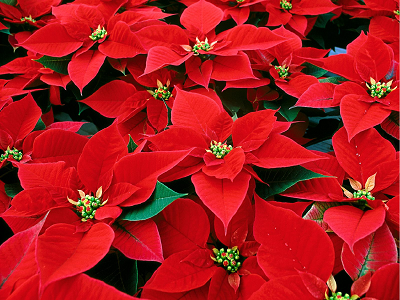Floral Design with Cara: The Christmas Stars
By Cara Ewald on December 12, 2014 from Floral Design with Cara
 perfectly blooming, follow these care tips:
perfectly blooming, follow these care tips:- Pick a plant with small, tightly clustered buds in the center.
- Look for crisp, bright, undamaged foliage.
- When surface soil is dry to the touch, water thoroughly, discarding any excess water in the saucer.
- To prolong color, keep a temperature range of 60 degrees for night and 72 degrees for day. High humidity is preferable.
- Place plants away from hot or cold drafts, and protect from cold winds.











